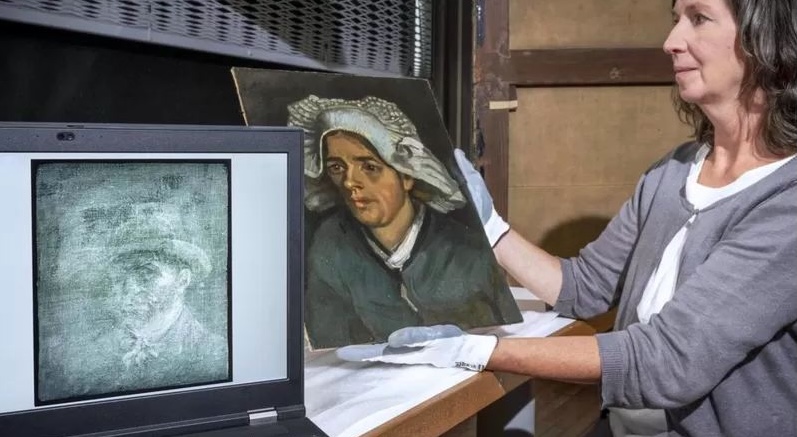“When we first saw the X-ray, of course we were very excited,” explained Lesley Stevenson, Senior Curator at the National Gallery of Scotland. “This kind of discovery only happens once or twice in a curator’s life,” she noted.
“Moments like these are incredibly rare,” said Frances Fowle, curator at the National Gallery of Scotland.
“We have discovered a previously unpublished work by Vincent Van Gogh, one of the world’s most important and well-known artists,” he added. Until now, the museum had three works by the artist.
– Separate the two paintings? –
Van Gogh (1853-1890) is known to have reused fabrics to save money, especially early in his career. He would turn the canvas over and paint on the other side. In 1885, he was living in the Netherlands, and his style was in full swing, five years after he had enrolled at the Royal Academy of Fine Arts in Brussels.
The self-portrait would have been painted a little later, after passing through Paris, where he settled in 1886 and discovered the Impressionists.
The X-ray study was carried out during preparations for an exhibition due to open on July 30 at the National Gallery of Scotland called “A Taste for Impressionism” featuring works by Van Gogh, Degas, Gauguin and Monet. The exhibition will be open until November 13.
The self-portrait will be the star piece of the exhibition, reproduced by radiography.
The experts are studying how the two paintings could be separated, after having removed the adhesive and the cardboard, a very delicate job if the “Portrait of a Peasant Woman” is not to be damaged.
Van Gogh, a troubled painter afflicted with mental illness in his later years, garnered little recognition while he was alive. He died in France at the age of 37, after shooting himself in the chest with a revolver.
His oeuvre encompasses more than 2,000 paintings, drawings, and sketches. He used to paint self-portraits, of which 37 were known to date and which reflect the evolution of his technique.
In 2021, his famous watercolor “Stacks of Wheat”, painted in Arles (South of France) in 1888, was auctioned for 35.85 million dollars by Christie’s in New York, a record for the artist.



